How To Spot Fake Pokemon Cards
Spotting fake Pokemon cards can be hard at first, but it gets much easier with practice. Here at The Card Bazaar, we've created a handy step-by-step guide to help you identify counterfeits. If possible, it's good to have a few known genuine cards on hand to compare to the potential fakes.
1. The back of the card
In our opinion, using the reverse (blue side) of the card is one of the best ways to identify fake Pokemon cards as around 80% of counterfeits can be spotted using this method. Fake cards often have an inconsistent reverse art that is a different colour (often a lighter shade of blue) to the back of a genuine card. Look at the top right of the Pokeball (shown below). On a fake card, this area is often filled in with blue. However, on a genuine card it will always have a certain pattern featuring light blue as well as some spots of darker blue.
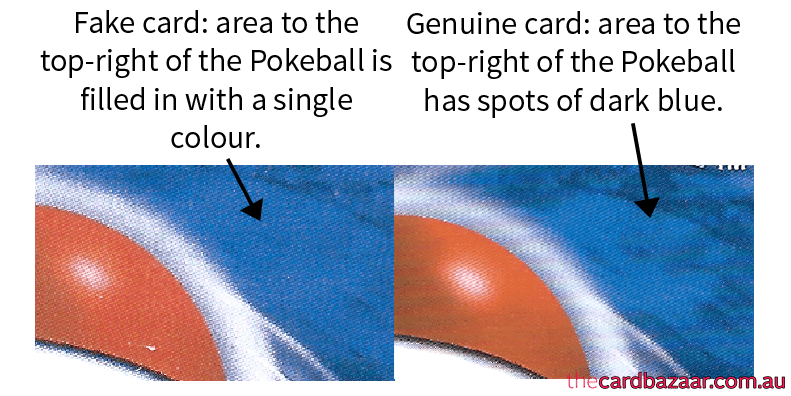
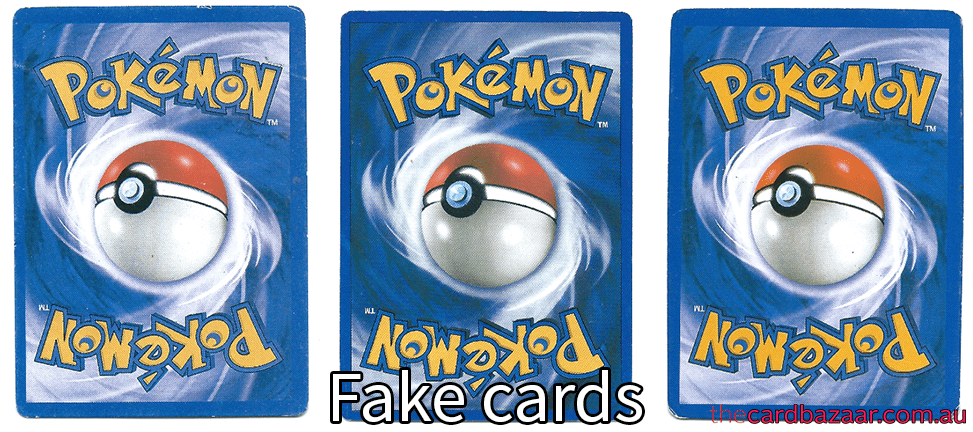
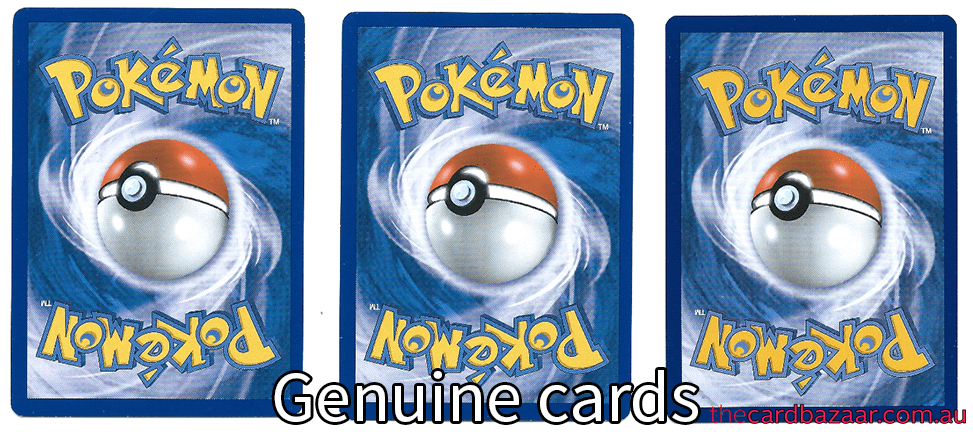
2. Font/spelling
Often fake cards make spelling mistakes or use fonts that genuine cards don't use. Below are some examples:
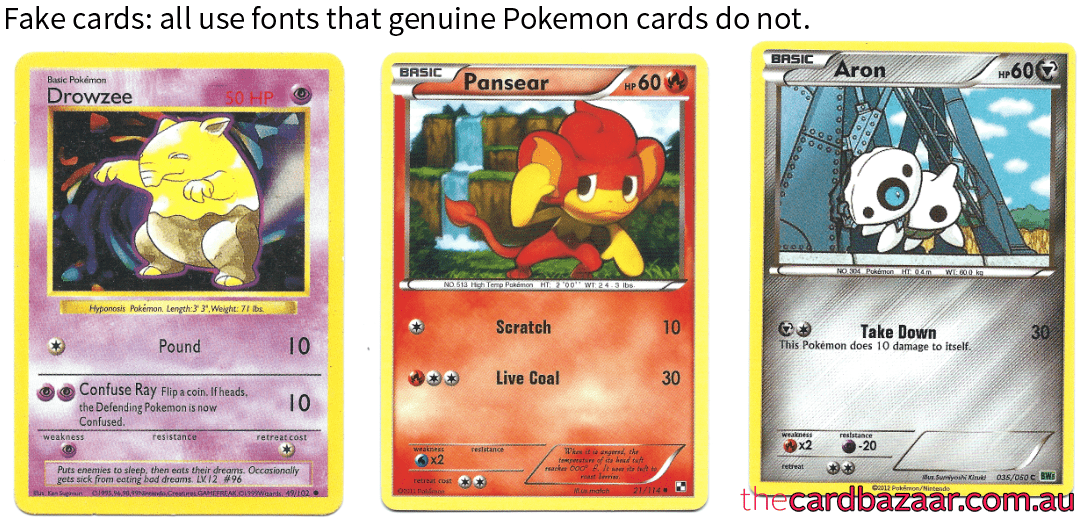

3. The energy symbols
Fake cards often feature energy symbols in which the inner artwork is larger than it should be. See the Empoleon image below point 4 for an example.
4. Colouring
As well as potentially having a reverse side that's an odd shade of blue, fake cards may be discoloured on the front face as well. This may be tricky to detect, but once you've spent some time looking at genuine cards eventually you'll develop an eye for the colours that Nintendo uses.
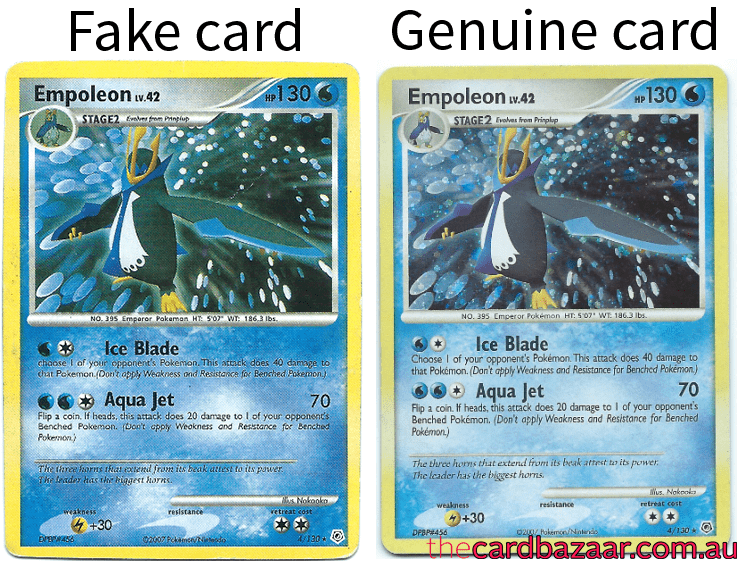
On the fake card we can see that the shade of blue is quite different to the shade used on the genuine card. In addition, the inner black artwork of the energy symbols on the counterfeit are much bigger.
5. Health points/damage
Some fake cards will use unrealistic damage or health point amounts. Generally, a Pokemon shouldn't have more than 300HP and shouldn't deal more than 300 damage in a single attack. If you're not sure, do a Google image search of your card. Make sure to type in the number (found in the bottom right of the card, in the format XXX/XXX) as well as the Pokemon's name to ensure that you find an image of your exact card.
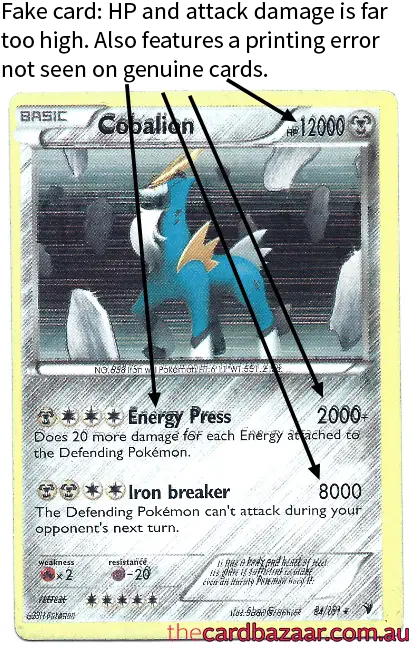
6. Holographic effect
Many fake cards feature an unusual holographic effect that genuine Pokemon cards do not have. Other times, the fake card will be printed without a holographic effect even though it should have one.
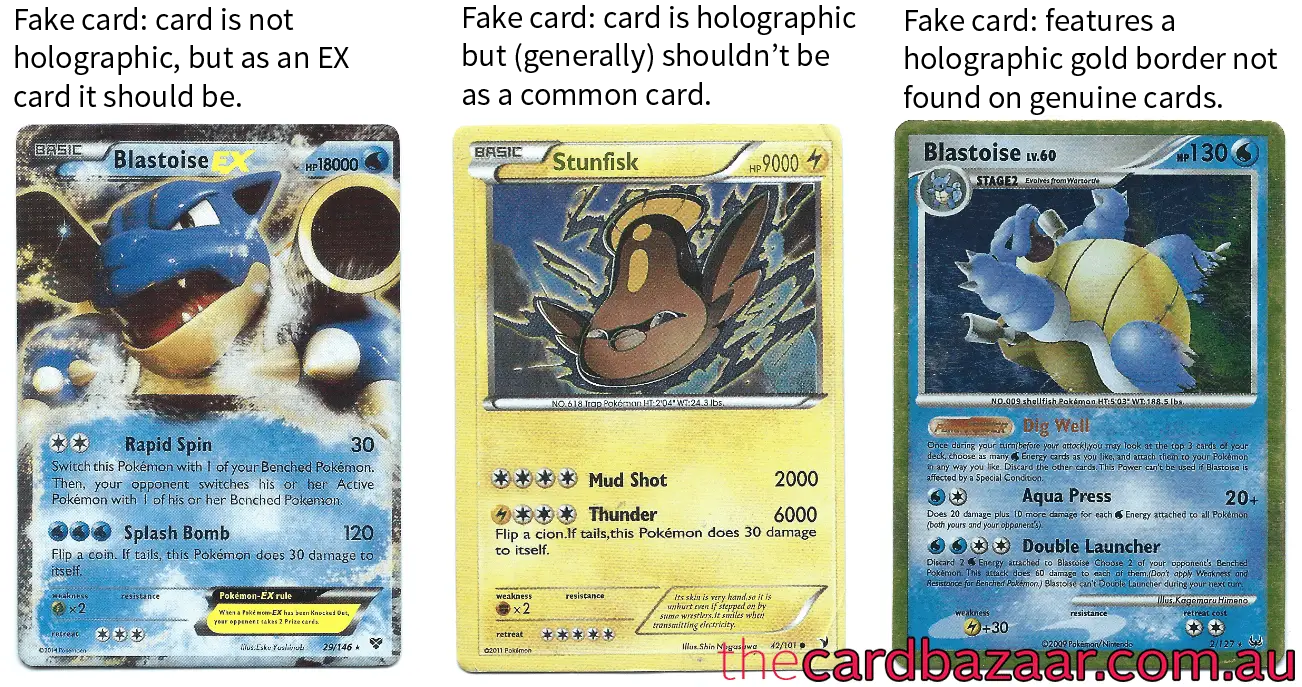
7. The light test
Many fake cards let through a lot of light when a torch is shined directly at them. Before trying this, take a known genuine card and see how much light passes through it to establish a benchmark.
8. Card material
Fake cards often feel quite different to genuine cards. Try bending the potential fake slightly or rub the surface of your finger across the card, and then do the same with a genuine card. In addition, fake cards are often prone to wearing very easily, so watch out for this.
9. Others
There may be other ways to spot fake cards that we haven't mentioned here. For example, the Drowzee pictured below uses normal fonts, colours and energy symbols. However, we noticed tiny spots of cardboard on the top and bottom of the card which suggest that it has been punched out of a cardboard sheet. Genuine Pokemon cards are not made this way, so the card is a fake.
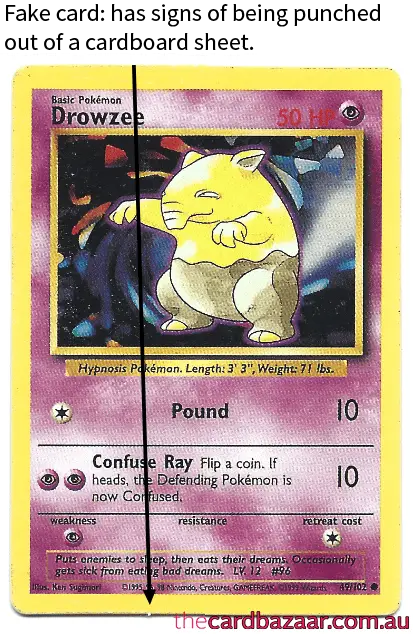
Potential false flags
Occasionally, there may be instances where a genuine card exhibits a feature similar to one of the signs of a fake card we have just mentioned. Below are a few things to look out for:
• Disproportionate borders: Pokemon sometimes miscuts their cards, resulting in a slightly larger yellow border on one side of the card. This does not necessarily mean that the card is fake.
• Promo cards: often promotional cards have different features to normal cards. For example, they may have stamped graphics or may be oversized. Look for a black star near the card artwork or in the bottom right corner of the card.
• Misprints: very occasionally Pokemon makes mistakes when printing their cards. This was particularly common during the earlier print runs such as the Base Set. For example, Vulpix 68/102 from the Base Set in some print runs was printed with "HP 50" instead of "50 HP". These errors are quite rare, but the ones that do exist are well known. Therefore, if you're unsure, be sure to Google your card to determine if it was a rare printing error or the mistake of a counterfeit producer.
Hopefully this guide was helpful! If you're still unsure if your card is fake, you can send us a picture using email: enquiries(at)thecardbazaar.com.au or our contact form and we will try to help you figure out if your card is genuine. Remember, we guarantee to never sell or stock any fake trading cards.
If you're trying to see if your Pokemon cards are genuine in order to sell them, you may be interested in reading our guide to what your Pokemon cards are worth.
Copyright The Card Bazaar 2021© all rights reserved. If you wish to feature this article, you can, however please link back to our site and let us know you have done so. Thank you.
